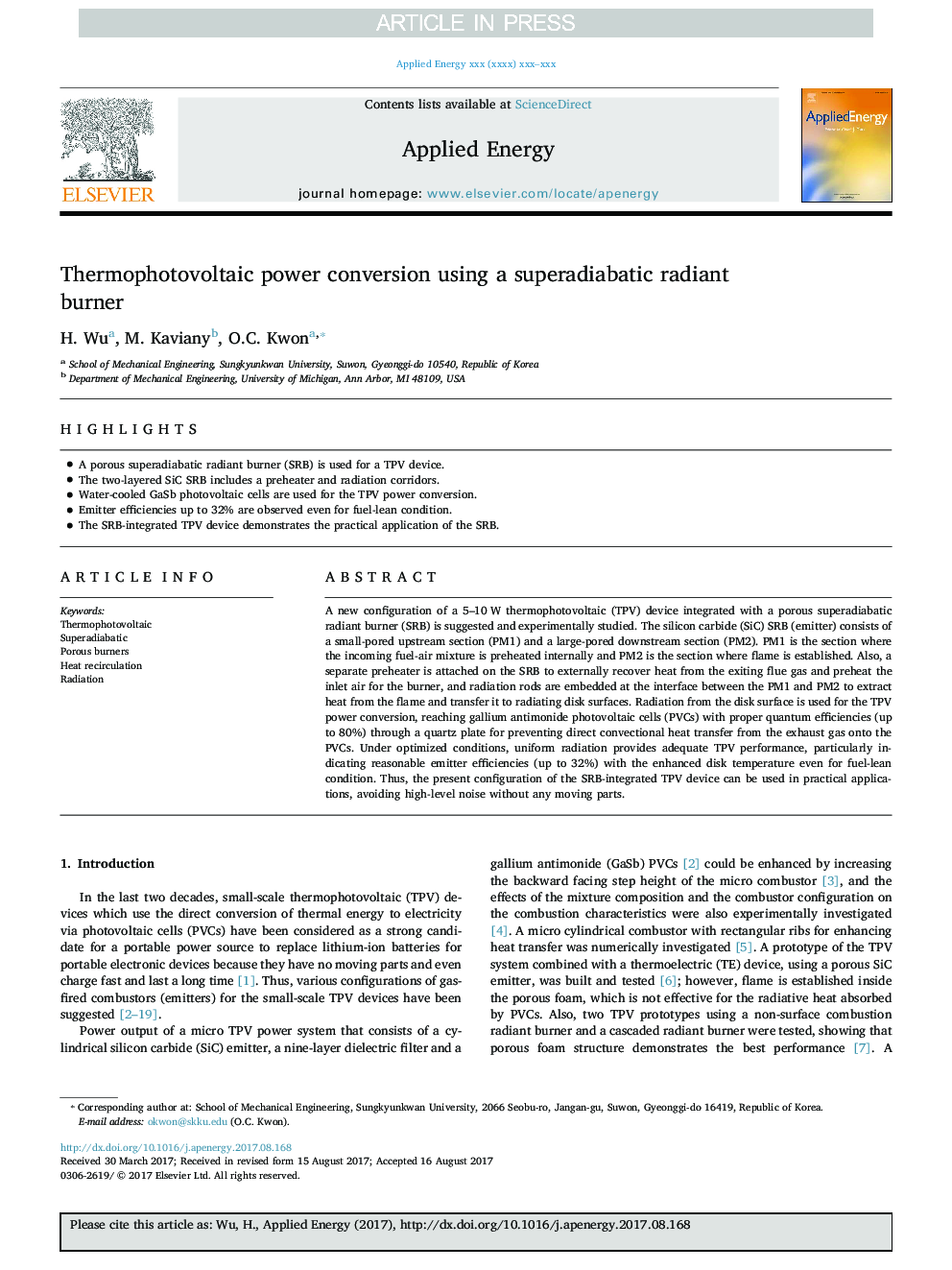| Article ID | Journal | Published Year | Pages | File Type |
|---|---|---|---|---|
| 6681569 | Applied Energy | 2018 | 8 Pages |
Abstract
A new configuration of a 5-10Â W thermophotovoltaic (TPV) device integrated with a porous superadiabatic radiant burner (SRB) is suggested and experimentally studied. The silicon carbide (SiC) SRB (emitter) consists of a small-pored upstream section (PM1) and a large-pored downstream section (PM2). PM1 is the section where the incoming fuel-air mixture is preheated internally and PM2 is the section where flame is established. Also, a separate preheater is attached on the SRB to externally recover heat from the exiting flue gas and preheat the inlet air for the burner, and radiation rods are embedded at the interface between the PM1 and PM2 to extract heat from the flame and transfer it to radiating disk surfaces. Radiation from the disk surface is used for the TPV power conversion, reaching gallium antimonide photovoltaic cells (PVCs) with proper quantum efficiencies (up to 80%) through a quartz plate for preventing direct convectional heat transfer from the exhaust gas onto the PVCs. Under optimized conditions, uniform radiation provides adequate TPV performance, particularly indicating reasonable emitter efficiencies (up to 32%) with the enhanced disk temperature even for fuel-lean condition. Thus, the present configuration of the SRB-integrated TPV device can be used in practical applications, avoiding high-level noise without any moving parts.
Related Topics
Physical Sciences and Engineering
Energy
Energy Engineering and Power Technology
Authors
H. Wu, M. Kaviany, O.C. Kwon,
